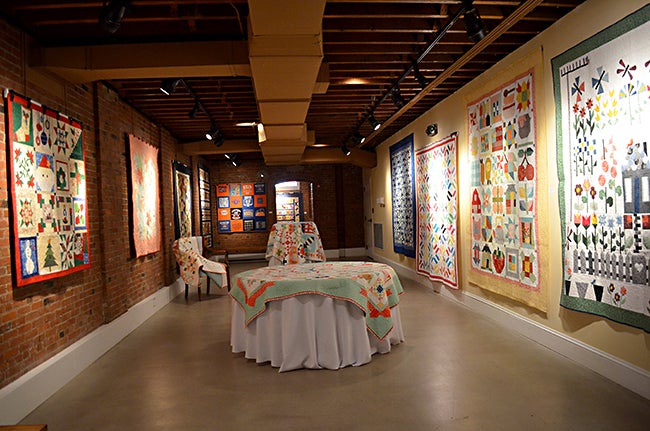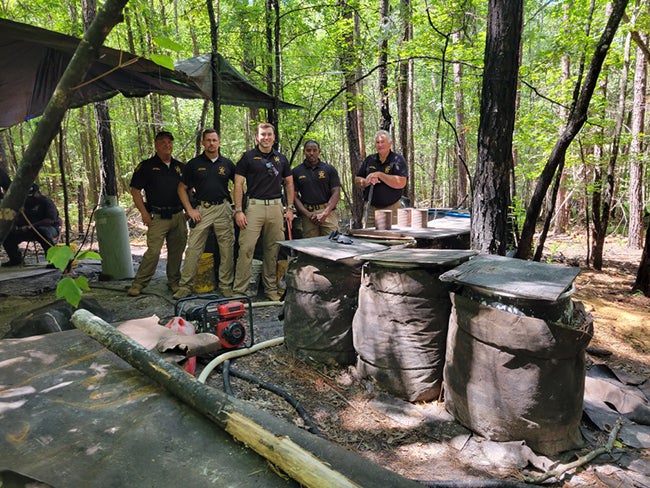The world ‘as Mose T would see it’
Published 11:00 pm Friday, May 10, 2013

The “As Mose T Would See It: Expressions Through the Life of Moses Tolliver” exhibition is on loan to the Johnson Center for the Arts from the collection of Dr. Douglas Hawkins through May 31. The Johnson Center is located on East Walnut Street in downtown Troy. The exhibit will be on display at the Johnson Center for the Arts until May 31. A reception will be held for the Tolliver and Walter Black, Best of Show, exhibits from 6 until 8 p.m. Thursday, May 16. The public is invited to attend. Johnson Center hours are from 10 a.m. until 5 p.m. Wednesday through Friday and until 3 p.m. on Saturday. Admission is free.
Legendary Alabama folk artist Mose Tolliver saw the world in a vastly different way.
The Johnson Center for the Arts offers visitors the rare opportunity to see the world “As Mose T Would See It.”
The “Expressions Through the Life of Moses Tolliver” exhibition is on loan to the Johnson Center from the collection of Dr. Douglas Hawkins of Troy through May 31.
From his collection, Hawkins has framed more than 100 pieces of Tolliver’s work to be displayed “As Mose T Would See It: Expressions Through the Life of Moses Tolliver.”
“I would often travel to Mose T’s home in Montgomery and carry him scrap wood and pieces of furniture,” Hawkins said. “While there, I would visit with him and his family. I was always surprised how Mose T sat on the bed to paint. He always had a smile on his face and always waited on his money.”
Hawkins began collecting Tolliver’s artwork in the early 1990s but his collection dates from the early 1970s until the year Tolliver died, 2006.
“It easy to see the progression and state of life Mose T relayed through his pieces, according to his current life situation,” Hawkins said. “I think his art is some of the very best folk art that has been produced so far.”
Hawkins said Tolliver’s work is a prime example of outsider art.
“His expressions of things, animals and people show a very different picture of things,” he said.
Morgan Drinkard, Johnson Center executive director, said Tolliver, a disabled African American folk artist, was the son of Alabama sharecroppers in the Pike Road area.
“Mose Tolliver was one of 12 children,” Drinkard said. “He knew that he was born on the Fourth of July but he didn’t know the exact year.”
Tolliver became an artist by accident, literally.
“In the late 1960s, Mose T was working in a furniture factory,” Drinkard said. “He was sweeping the floor and a load of marble on a forklift shifted and fell on him. He suffered a severe leg injury and became disabled.”
Unable to work and anxious to find something constructive for his idle mind to do,” Tolliver started painting.
“He used anything and everything as a canvas and he painted with house paint and old brushes,” Drinkard said. “Mose T was a self-taught artist and he painted what he saw and what he knew.
Tolliver would often sit the front yard of his Montgomery home and paint children playing across the street, dogs on the howl and cats on the prowl, women and men great and small, birds flying overhead and cars, bicycles and trains as they passed by. Anything Tolliver saw was a subject for his paintings. |
Tolliver also painted things from his imagination, or perhaps dreams. His birds often took on the appearance of prehistoric creatures and his animals had a menacing look.
Tolliver painted many self-portraits and he often pictured himself with crutches, an admission of his station in life.
Tolliver’s artwork has been exhibited in the Smithsonian American Art Museum in Washington, D.C. and other major galleries east of the Mississippi.
Hawkins said his hope is that his collection of Tolliver’s work will become a traveling exhibition so that people across the nation can view the work of the legendary Alabama folk artist.





